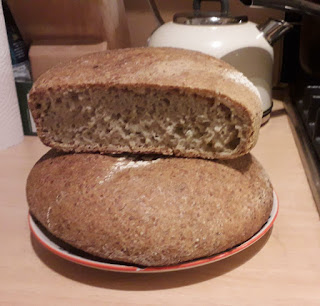Making Bread
One of the
highlights of last year was the end of my stomach problems. But it came along
with a disappointment: being diagnosed with a gluten intolerance. In other
words, 2019 was the end of bread.
Gluten-free bread
can either be bad or dreadful. In the last months, breakfast was no longer my
favourite meal of the day, and lunches out for a sandwich or a soup (always with
bread) stopped being the relaxing break after a busy morning. You can switch
off when the food is minimally decent, but you cannot when the bread is bad.
Coming close to
accepting it, at Christmas I received Cannelle et Vanille, a gluten-free
cookbook by the Basque chef Aran Goyoaga. Her moist and crusty sourdough bread
is nothing like to what’s out there in the shops. Also, laborious. If I want to
go back to bread, I need to slow down.
Along with the joy
of eating bread again, I also discovered the joy of making it. The new
popularity of producing physical things with our hands (pottery, clothes,
jewellery…) is directly linked to retrieving ourselves from the screen. In the
last week, I’ve spent a significant amount of time preparing the starter and attending
its needs, as well as making the dough. My attention has become more and more focused.
Is the starter bubbling? Is there any lump in the dough? What’s the temperature of this room?
Making bread is
close to meditation. If I want to do it properly, I need to reject the outside
world. I can’t be anywhere else (not even with my imagination) but in the kitchen,
where everything gets messy. My hands, my shirt, the sleeves, which gradually
rolled down. My fingers, with white dust in the nails, take new directions, completely
different to typing. They were so sticky that I can’t even touch my phone.



Comments
Post a Comment